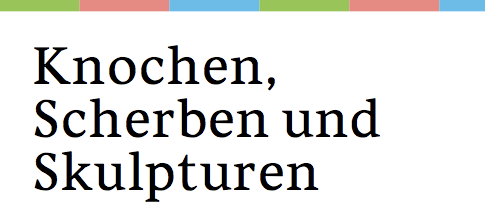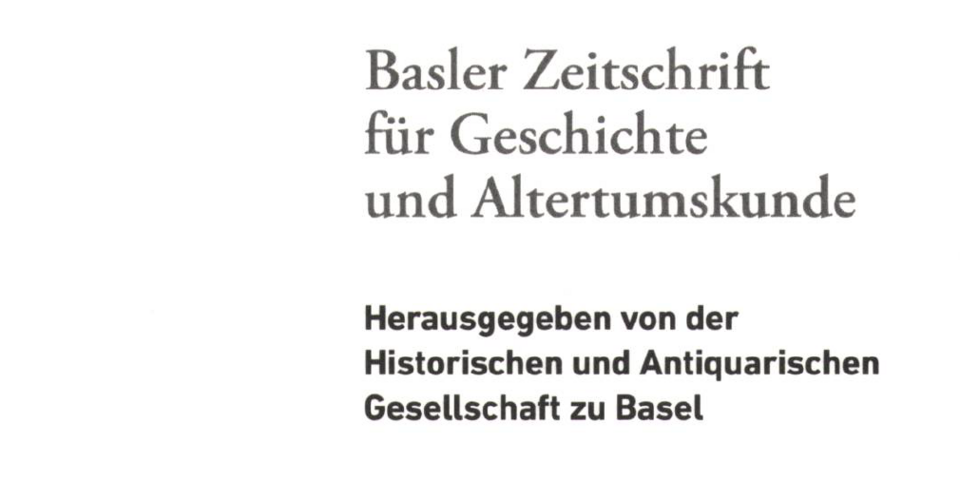The History of Classical Archaeology in Basel
1841
Wilhelm Vischer-Bilfinger (1808-1874), professor of Greek language and literature, researches and publishes three Iron Age burial mounds at Hard near Basel.
1849
Inauguration of the museum on Augustinergasse. The art treasures on display include plaster casts and some antique originals.
In the winter semester, Jacob Burckhardt (1818-1897) gives his first lecture on the "History of Ancient Art" in Basel.
1859
Johann Jakob Bernoulli (1831-1913) habilitates in "the subjects of classical philology and archaeology and ancient history".
1874
Johann Jakob Bernoulli is appointed Extraordinarius and in 1895, in recognition of his publications on iconography, Ordinarius. He teaches Classical Archaeology on an honorary basis until 1898.
Wilhelm and Sophie Vischer-Heussler establish an endowment for the benefit of a professorship in classical studies with emphasis on archaeology or comparative linguistics.
1887
A separate building is erected on Klostergasse for the plaster casts; part of the archaeological teaching also takes place in this first "sculpture hall".
1890
Ferdinand Dümmler (1859-1896) from Halle is appointed full professor of Latin language and literature; in his short teaching career he offers several archaeological exercises on vases and sculpture.
1898
With the appointment of Hans Dragendorff (1870-1941) from Estonia, the professorship of the Vischer-Heussler Foundation comes to archaeology for the first time. After only four years of work, Dragendorff accepts a call as head of the Roman-Germanic Commission in Frankfurt.
1907
Ernst Alfred Stückelberg (1867-1926) habilitates for "Frühchristliche Alterthumskunde, Kunstgeschichte und historische Hilfswissenschaften".
1909
Ernst Pfuhl (1876-1940) from Charlottenburg is appointed Extraordinarius for Archaeology to the endowed professorship. 1911 He is promoted to full professor. He advocates the founding of an archaeological seminar.
1912
The curatorship approves the establishment of the Seminaries of Musicology, of Archaeology and of Economics and Economic History, decided by the Faculty of Philosophy. The Archaeological Seminar is given a room in the University Library, and in addition, in 1924, the adjoining so-called Lecture Hall.
1924
Elsa Mahler (1882-1970) becomes the first doctoral student to receive a doctorate in Classical Archaeology. In 1928 she habilitates in Russian language and literature and is appointed the first female professor at the University of Basel in 1938.
1927
Due to lack of space, the plaster collection is stored in basement rooms at Viaduktstrasse 45; it remains there until the move in 1941 to temporary premises at Mittleren Strasse 33.
1935
The request of the curatorship and the Regenz for the creation of four new chairs (Oriental Philology, General and Indo-Germanic Linguistics, Classical Archaeology, and Musicology) is rejected for financial reasons.
1936
Karl Friedrich Schefold (1905-1999), who is denied further advancement in Germany for political reasons, habilitates in Classical Archaeology. 1939 He receives a teaching assignment for "Art of the Ancient Orient and Christian Antiquity," which is expanded two years later to include "Art History of the Ancient Mediterranean Peoples."
1941
After Ernst Pfuhl's death, Arnold von Salis (1881-1958), full professor in Zurich, is entrusted with the chair until 1948.
1942
Karl Schefold is appointed Extraordinarius and in 1953 Full Professor.
1960
Karl Schefold is appointed holder of the newly created Chair of (Classical) Archaeology. For the five hundredth anniversary of the University, he organizes together with Herbert A. Cahn and Christoph Bernoulli an exhibition of Greek antiquities with international loans ("Masterpieces of Greek Art"), which meets with great interest.
1961
The million Swiss francs donated by Dr. René Clavel and the support of private collectors pave the way for the foundation of the Museum of Antiquities, which opens in 1966 with Ernst Berger as its director.
1962.
Ernst Berger (1928-2006) habilitates in "Classical Archaeology." In 1968 he is appointed Extraordinarius.
1963
The Archaeological Seminar moves into the newly opened Sculpture Hall at Mittleren Strasse 17 for the duration of the renovation of the University Library (until 1968).
1964
Karl Schefold leads the first Swiss excavations in Eretria (GR).
1975
Foundation of the "Ecole suisse d'archéologie en Grèce".
1976
Margot Schmidt (1932-2004) habilitates in "Classical Archaeology with special reference to painting and mythology". 1982 She is appointed Extraordinaria.
1977
Rolf A. Stucky (*1942) is appointed full professor of Classical Archaeology and head of the Archaeological Seminar.
1982
After completion of the Parthenon reconstruction project in the Sculpture Hall, Ernst Berger organizes an international Parthenon Congress.
Peter Blome (*1948) habilitates in "Classical Archaeology"; in 1988 he is appointed Extraordinarius.
1988
Start of excavations in Petra (Jordan) under the direction of Rolf A. Stucky.
1995
Karl Reber (*1955) habilitates in "Classical Archaeology". 1996 he is appointed assistant professor, 2001 titular professor.
1998
Martin A. Guggisberg (*1960) habilitates in "Classical Archaeology". 2005 he is appointed titular professor.
2008
Martin A. Guggisberg is appointed full professor for Classical Archaeology and head of the Archaeological Seminar.
2010
The Department of Ancient Civilizations, which has been in existence since 2008, moves for the first time into a joint domicile in the Rosshof at Petersgraben 51. It comprises the departments of Egyptology, Ancient History, Classical Archaeology, Prehistory and Early History and Provincial Roman Archaeology, Greek Studies, Latin Studies, Historical-Comparative Linguistics and Ancient Near Eastern Studies.
Personalities, sponsors and lecturers of Classical Archaeology

In the years around 1850, the Greek scholar and later government councilor Wilhelm Vischer-Bilfinger played a decisive role in the university and politics as well as in the cultural life of Basel. In 1832 he became a private lecturer and teacher at the Pädagogium, and in 1836 a full professor of Greek language and literature. His travels to Italy and Greece familiarized him with the material evidence of antiquity, but he also had a keen interest in the archaeological legacy of the region. In 1841 he researched and published three Iron Age burial mounds located in the Hard near Muttenz. At his instigation, the "Antiquarian Society" was founded in 1842, which was particularly committed to regional archaeology and also purchased objects, such as the finds from the Roman villa at Frick, Celtic coins from Nunningen or the large coin find of the 3rd century AD from Reichenstein.
The museum on Augustinergasse, which opened in 1849, not only housed local finds, but also objects from the Mediterranean region. Vischer repeatedly lobbied for the purchase of originals, such as two heads owned by the sculptor Carl Steinhäuser, a group of vases from Capua, and Greek coins, which he arranged himself. Some of the generous donations were objects from his own collection. The plaster casts kept in a large hall were also close to his heart, and he appealed to the citizens of Basel for donations to increase them.
After his retirement from teaching, Vischer, as a member of the government and head of the College of Education, succeeded in 1869 in having the young Friedrich Nietzsche, who had not yet received his doctorate, elected to the chair of Greek.
On the person: E. His, Basler Gelehrte des 19. Jahrhunderts (Basel 1941) 125-135. - K. Schefold, Basler Antiken im Bild (Basel 1958) 6-12. - E. Vischer, Wilhelm Vischer, scholar and councilor 1808-1874, in the mirror of his correspondence with Rudolf Rauchenstein (Basel 1958). - B. Wyss, Wilhelm Vischer-Bilfinger (1808-1874) und das Philologische Seminar der Universität Basel, Museum Helveticum 19, 1962, 225-231.
Works (selection): Erinnnerungen und Eindrücke aus Griechenland (Basel 1857). - Kleine Schriften 1-2 (Leipzig 1877/78).

After a few semesters of theology in Basel, Jacob Burckhardt, born as the son of the later antist of the Basel church, studied history, classical studies and art history in Berlin and Bonn and received his doctorate in 1843 with a thesis on Charles Martel. From his habilitation in 1844, he taught history and art history at the University of Basel for almost fifty years, interrupted only by longer travels and by his work as a full professor of art history and archaeology from 1855 to 1858 at the newly opened Eidgenössisches Polytechnikum in Zurich. His brilliant and always freely delivered lectures covered all epochs from Ancient Egypt to Napoleon. In his public lecture cycles he also shared his knowledge with a wider audience.
In 1849 he read for the first time on the "History of Ancient Art", thus giving the first archaeological lecture in Basel. Later, he treated the "Art of Antiquity" every two years on a rotating basis and was careful to include new discoveries in his presentation. He found little to like in the austere sculptures of the Temple of Zeus at Olympia, but he was one of the first to recognize the artistic significance of the Altar of Pergamon.
The publications that appeared during Burckhardt's lifetime were on late antiquity ("Die Zeit Constantins des Grossen," 1853) and on the art and history of Italy ("Der Cicerone," 1855; "Die Cultur der Renaissance in Italien," 1860, "Die Geschichte der Renaissance in Italien," 1867). The "Griechische Culturgeschichte" he treated several times in lectures, but he refrained from publishing it.
On the person: E . His, Basler Gelehrte des 19. Jahrhunderts (Basel 1941) 184-201. - W. Kaegi in: A. Staehelin (ed.), Professoren der Universität Basel aus fünf Jahrhunderten (Basel 1960) 152-153 - W. Kaegi, Jacob Burckhardt, eine Biographie 1-7 (Basel 1947-1982).
On the work: Gesamtausgabe (Basel 1929-1934). - Critical complete edition (Basel 2000ff.).
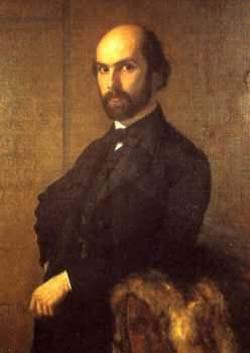
Johann Jakob Bernoulli, a son of the pharmacist of the same name and brother of the physician and naturalist Carl Gustav Bernoulli, completed his studies in Basel and Berlin in 1854 with a thesis on ancient history. In 1855/56 he traveled to Rome and parts of Italy and Greece. Back in Basel, he worked for a long time as a teacher of history at the Gymnasium and Pädagogium, as well as at what was then the Gewerbeschule. In 1859 he habilitated for the "subjects of classical philology and archaeology and ancient history". In 1874 he was appointed extraordinarius. For almost four decades he taught Classical Archaeology on an honorary basis, as the existing chairs in Classical Studies were devoted to Greek and Latin philology. Bernoullli's main research focus was the field of ancient sculpture; it was not least thanks to his work that the large collection of plaster casts was given its own building in 1887.
Bernoulli was interested not only in ancient art, but also in contemporary art. Even on his first trip to Rome, he maintained intensive contact with the artistic circles there; in Basel, he was committed to the work of his friends Arnold Böcklin (1827-1901) and Ernst Stückelberg (1831-1903).
Bernoulli set himself a lasting monument with his fundamental publications on ancient iconography and portrait art. He had acquired the necessary knowledge of monuments in the great museums of Europe. In his Iconography of the Roman Emperors (1886-1894), for example, he established the criteria for today's type distinction through careful comparisons, established replica series, and eliminated forgeries. After the completion of the "Roman Iconography" Bernoulli was promoted to full professor in 1895 in recognition of his great scientific merits.
On the person: R. Bernoulli-Sutter, Die Familie Bernoulli (Basel 1972) 146-147. - K. Schefold, Der Archäologe Johann Jacob Bernoulli (1831-1913), Basler Zeitschrift für Geschichte und Altertumskunde 87, 1987, 155-160. - K. Schefold, in: R. Lullies/W. Schiering (eds.), Archaeologenbildnisse. Portraits and Short Biographies of Classical Archaeologists of German Language (Mainz 1988) 55-56.
Works (selection): Aphrodite. Ein Baustein zur griechischen Kunstmythologie (Leipzig 1873). - Römische Ikonographie I: Die Bildnisse berühmter Römer mit Ausschluss der Kaiser und ihrer Angehörigen (Stuttgart 1882). - Roman Iconography II 1-3: The portraits of the Roman emperors and their relatives (Berlin 1886-1894). - Greek iconography with exclusion of Alexander and the Diadochi (Munich 1901). - The surviving representations of Alexander the Great (Munich 1905).
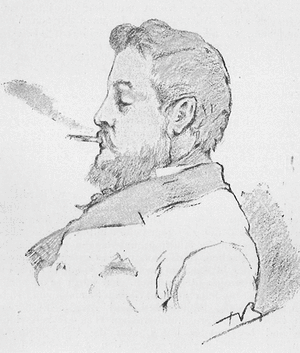
Ferdinand Dümmler, a native of Halle, completed his studies in classical philology and archaeology in Halle, Strasbourg and Bonn in 1882 with a dissertation on the philosopher Antisthenes. His scholarship trip took him to Rome, Etruria, and Greece; a second stay was especially devoted to the Cyclades and Cyprus, where he conducted surveys and small excavations under difficult conditions.
In 1887 he habilitated in Giessen. In 1890 he accepted an appointment as full professor at the University of Basel. Together with Jacob Wackernagel, he represented classical studies in a comprehensive sense: in addition to philological courses, epigraphy, linguistics and, above all, archaeology also had their place. As early as 1887, he had succeeded in deciphering and interpreting the Latin inscription on the Fibula Praenestina, long suspected of being a forgery. He was one of the first to recognize the independence of the Minoan culture. However, he did not have the time for his goal of "naturalizing archaeology a little more here [= in Basel]" (Wolters 1917, 299). His early death at the age of 38 also destroyed his project of a comprehensive "Greek Cultural History", in favor of which his older, revered colleague Jacob Burckhardt had apparently renounced similar plans of his own.
On the person: F. Studniczka in: Allgemeine Deutsche Biographie 1904, 163ff. and online. - P. Wolters, Aus Ferdinand Dümmlers Leben. Dichtungen, Briefe und Erinnerungen, den Freunden zum 15. November 1916 dargebracht (Leipzig 1917). - P. Von der Mühll in: A. Staehelin (ed.), Professoren der Universität Basel aus fünf Jahrhunderten (Basel 1960) 264th - R. Lulllies in: R. Lullies/W. Schiering (eds.), Archaeologenbildnisse. Portraits and Short Biographies of Classical Archaeologists of German Language (Mainz 1988) 128-129.
Works: Kleine Schriften 1-3 (Lepizig 1901).
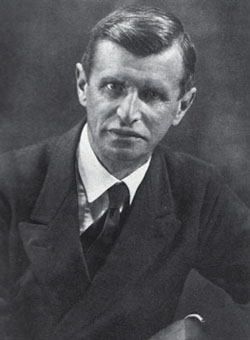
Born in Estonia, Hans Dragendorff studied classical archaeology, ancient history and classical philology in Dorpat, Berlin and Bonn. In 1895, he published his dissertation "De vasculis Romanorum rubris capita selecta" in an expanded, German version; it is still considered a standard work for the naming and classification of Roman luxury tableware. As part of his fellowship, he participated in the excavations of the Archaic necropolis at Thera.
In 1898 Dragendorff was appointed Extraordinarius for Classical Philology and Archaeology in Basel. Only four years later he left the university, as he was given the direction of the newly founded Roman-Germanic Commission of the German Archaeological Institute. Even in Frankfurt, however, he remained in contact with Swiss archaeology, especially with provincial Roman archaeology. In 1906 he directed the excavations at the north gate of the legionary camp of Vindonissa and worked for the foundation of the museum then opened in 1912. In 1911 he was appointed Secretary General of the German Archaeological Institute in Berlin, which he also presided over during the difficult war years.
In 1922 Dragendorff accepted a call to the University of Freiburg i. Br. as full professor of classical archaeology. After his retirement in 1938, he again took over the direction of the Roman-Germanic Commission at the beginning of World War II until his sudden death in October 1941.
On his person: E. His, Worte der Erinnerung an Prof. Dr. Hans Dragendorff, Basler Zeitschrift füt Geschichte und Altertumskunde 40, 1941, 187-189. - G. Rodenwaldt, Gedächtnisrede auf Hans Dragendorff, mit Schriftenverzeichnis, zusammengestellt von H. Sichtermann, Jahrbuch der Preussischen Akademie der Wissenschaften 1941, 210-217. - P. Goessler, Badische Fundberichte 17, 1941-47, 9-11. - G. Grimm, Hans Dragendorff, in: R. Lullies/W. Schiering (eds.), Archaeologenbildnisse. Portraits and Short Biographies of Classical Archaeologists of German Language (Mainz 1988) 179-180.
On the work: Bibliography see above.

Ernst Pfuhl was born in Charlottenburg, the son of the sculptor Johannes Pfuhl. After studying classical studies in Berlin, he habilitated in Göttingen in 1905. Prior to this, he had spent four years traveling in Italy, Greece, Asia Minor and the Levant. During this time he excavated an archaic necropolis at Thera and did the first preparatory work for the corpus of eastern Greek tomb reliefs, which Alexander Conze entrusted to him in Pergamon. He remained connected with Greece throughout his life, also through his wife Sophia née Rhoussopoulos.
In 1909 he was appointed to Basel to the endowed professorship of archaeology, which had been vacant since the departure of Hans Dragendorff in 1902, and was made a full professor in 1911. His teaching duties included regular exercises in front of the plaster casts in the sculpture hall, a task that suited him very well. At his instigation, casts of archaic and Hellenistic sculptures were purchased for the first time. With perseverance, Pfuhl improved the infrastructure of the seminary, which was founded in 1912, enlarged the library, and worked for the acquisition of projection apparatus. Otherwise, he taught the entire breadth of his subject, from Cretan-Mycenaean culture to the art of the imperial period.
In addition to teaching, the encyclopedic works on "Painting and Drawing of the Greeks" (1923) and the only posthumously published "Eastern Greek Funerary Reliefs" (1977-1979) took up all of Pfuhl's energy. The plan of a handbook of ancient sculpture he rejected again, perhaps in the awareness that he would not be given enough time. In 1940 he succumbed to heart disease.
On the person: K. Schefold (with preliminary work by P. Von der Mühll), Ernst Pfuhl, Basler Jahrbuch 1943, 84-100. - K. Schefold in: R. Lullies/W. Schiering (eds.), Archaeologenbildnisse. Portraits and Short Biographies of Classical Archaeologists of German Language (Mainz 1988) 192-193.
Works (selection): Painting and Drawing of the Greeks 1-4 (Munich 1923). - (with H. Möbius, ed. by K. Schefold), Ostgriechische Grabreliefs 1-2 (Mainz 1977-1979).
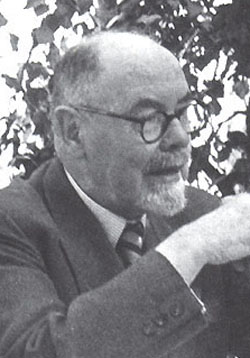
Arnold von Salis, son of the last antist of the Basel church, studied classical philology, archaeology and art history in Basel, Bonn and Berlin and received his doctorate in 1905 with an interdisciplinary thesis on ancient comedy. In 1906 he participated in the excavations of the German Archaeological Institute in Miletus, where he made the sensational discovery of two archaic tomb lions. After museum internships in Basel, Bonn and Berlin, he habilitated in Bonn in 1909 with a thesis on the Pergamon Altar.
In 1910 he was appointed extraordinarius at the University of Rostock; in 1916 he assumed a full professorship in Münster i. W. From 1929 he succeeded Ludwig Curtius at the University of Heidelberg. In 1940 he moved to the University of Zurich, where he worked persistently for the expansion of the still small institute. At the same time, after the sudden death of Ernst Pfuhl, he took over a teaching position in Basel and shared academic teaching with Karl Schefold until 1948. In 1951 he retired.
In teaching and works, von Salis was strongly influenced by Jacob Burckhardt and his teacher and friend Heinrich Wölfflin; he was the first to make Wölfflin's basic concepts of art history fruitful for archaeology. In particular, his book on the "Art of the Greeks", first published in 1919, bears witness to this.
On his person: H. Jucker, Gnomon 1958, 637-639. - M. Bieber, American Journal of Archaeology 62, 1958, 429-430. - H. Jucker, Schweizer Monatshefte 38, 1958/59, 432-437 (with list of the most important publications). - H. Jucker in: R. Lullies/W. Schiering (eds.), Archaeologenbildnisse. Portraits and Short Biographies of Classical Archaeologists of German Language (Mainz 1988) 210-211.
On the work: Bibliography see above.

Karl Schefold, a native of Heilbronn, received his doctorate from Paul Jacobsthal in Marburg in 1930. After travels and excavation experiences in the Mediterranean region, an assistant period in Athens followed, which, however, came to an early end due to the changed political circumstances. The task was to build up a new existence in Basel. Schefold habilitated in 1936 and taught first alongside Pfuhl, then alongside Arnold von Salis, until he was appointed personal full professor in 1953. In 1960, the archaeological chair was created for him.
During his almost forty years of activity, Schefold unfolded an astonishing productivity on the most diverse levels. His profound knowledge and holistic view of antiquity attracted many students. But also circles of art lovers, collectors and politicians were infected by his enthusiasm. The focus was always on the examination of the original, in art as well as in poetry, which he held in high esteem. Schefold's great achievements include the exhibition "Masterpieces of Greek Art" organized in 1960 and the founding of the Museum of Antiquities the following year. In 1964 he founded the Swiss excavations in Eretria, which continue to this day. For all undertakings, the right helpers were always on hand, but without Schefold's driving force, the plans could not have been implemented.
The focal points of his wide-ranging research were, for example, the development of Greek mythical images, Pompeian painting or the portraits of ancient poets, orators and thinkers. His last work was also dedicated to his deep conviction of the religious content of ancient art.
On the person: R. Stucky, Antike Kunst 42, 1999, 71; - M. Schmidt, Gnomon 72, 2000, 571-575; - M. Rohde-Liegle et al. (eds.), K. Schefold, Die Dichtung als Führerin zur klassischen Kunst. Memoirs of an Archaeologist (Hamburg 2003).
On the work: B. Müller-Huber (ed.), Karl Schefold, Bibliographie 1930-1990, with summary comments by the author (Basel 1990). - Bibliography Karl Schefold 1990-1999, Antike Kunst 42, 1999, 72.

Margot Schmidt, a native of Coesfeld (Westphalia), completed her wide-ranging studies, which also included ethnological and legal courses, in 1959 in Münster i. W. with a dissertation on Apulian vase painting, more precisely on the Darius painter, whom even then she loved and admired. From then on, the Greek-influenced vase painting of Lower Italy became one of her central fields of research, just as she felt Magna Graecia to be her true scholarly home. In 1962, at the invitation of Ernst Berger, she entered the service of the newly founded Basel Museum of Antiquities as a scientific assistant. As curator (since 1966) and deputy director (since 1993), she devoted all her energy to the museum's interests until her retirement in 1997.
Museum work and science were inseparable for Margot Schmidt. In 1975 she habilitated with "Studies on the Content and Form of Lower Italian Funerary Art". Another important field of research for her was Roman sarcophagi and the myth interpretation associated with them. In 1982 she was appointed Extraordinaria. For her outstanding achievements she was awarded the Science Prize in 1984. The interest in the perception of antiquity from a woman's perspective, which had already been echoed in the publication of the Basel Medea sarcophagus (1968), determined Margot Schmidt's scholarly work to the end of her career. The crowning achievement before her retirement was the exhibition "Pandora - Women in Classical Greece" (1995/96) in the Basel Museum of Antiquities, conceived together with Ellen B. Reeder.
On the person: R. A. Stucky, Antike Kunst 48, 2005, 3-5. - D. Suter, Gelehrtennachlässe aus 550 Jahren. Accompanying publication to the exhibition "Sammeln, sichten, sichtbar machen. Scholars' Bequests from 550 Years." Basel University Library (Basel 2010) 56f.
On the work: bibliography in Antike Kunst 48, 2005, 6-8.
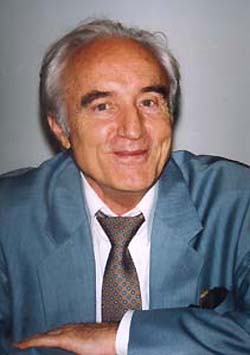
In 1961 Ernst Berger was called back to Basel from his former position as curator in Kassel to set up the newly founded Museum of Antiquities and also to prepare the reopening of the Sculpture Hall. Following his 1951 doctorate with Ernst Buschor in Munich, he had traveled the Mediterranean countries on a travel scholarship; in 1957-59 he had been assistant to Ernst Langlotz in Bonn at the university and at the Academic Art Museum. With great diplomatic skill and his characteristic enthusiasm, he succeeded in turning the Basel Museum of Antiquities into a house of international standing in a short time.
In 1962 he received the venia legendi in Basel, having previously habilitated in Freiburg i. Ü. For about a quarter of a century he systematically introduced students to Greek sculpture. With his two houses, he offered them ideal conditions: In the Museum of Antiquities, exercises took place in front of and with originals, as well as practical exercises on restoration and museum work. In the sculpture hall he let them participate in his experiments with new reconstructions or in his research on Polyklet. He had realized the almost unlimited possibilities offered by plaster casts for bringing together individual parts and for reconstructing groups lost in the original. Copy criticism could also be carried out very well on this basis, as demonstrated in particular by Berger's last major exhibition "The Artist's Design" in 1992.
The highlight of Ernst Berger's work was the donation of the Ludwig Collection in 1981, which necessitated a structural expansion of the Museum of Antiquities. Berger also took up this challenge in his usual sovereign manner, so that he was able to celebrate a second museum opening in 1988, 22 years after the first.
On the person: M. Schmidt in: Kanon, Festschrift Ernst Berger (Basel 1988) V-VI. - P. Blome and Barbara L. Begelsbacher, Antike Kunst 50, 2007, 3-5.
On the work: Bibliography in Antike Kunst 50, 2007, 6-8.
100th anniversary brochure
More detailed information on the history of the subject area can be found in the brochure "Knochen, Scherben und Skultpuren. 100 Years of Archaeology at the University of Basel".
The brochure can be obtained at the library counter or downloaded as a PDF:Anna Laschinger, Annemarie Kaufmann-Heinimann: Knochen, Scherben und Skulpturen. 100 Years of Archaeology at the University of Basel (2012).[PDF (9.6 MB)]
Anfänge der klassischen Archäologie an der Universität Basel
Für Näheres zum Ursprung des Fachbereichs können Sie folgende Publikation als PDF herunterladen: Annemarie Kaufmann-Heinimann: Von Grabhügeln und Dümmler-Vasen. Zu den Anfängen der klassischen Archäologie an der Universität Basel (2014). [PDF (1.5 MB)]

